From 11,362 feet, summertime in Switzerland’s Jungfrau region looks like a half-colornized photograph. Peering down from the viewing platform at Jungfraujoch, the mountain saddle that connects the Jungfrau and Mönch peaks in the Bernese Oberlands, you can trace the jagged, piny line where the limestone-and-ice mountains melt into the fertile green valleys below.
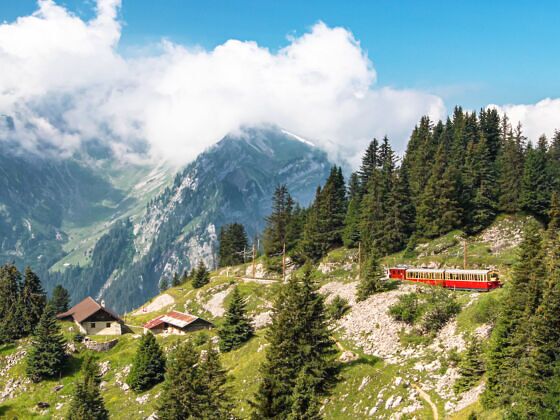

Switzerland's Jungfrau Travel Pass Is a Portal to the ‘Top of Europe, Adventure, and Swiss Tradition’
Jungfraujoch is the region’s crowning attraction, literally and figuratively. It’s accessed by the highest railway station on the continent, earning it the nickname the “Top of Europe.” But the Jungfrau region, located roughly one hour from the Swiss capital of Bern and three hours from Zurich by train, lays claim to the “top” of other attractions, as well.
From the village of Grindelwald, a tricable gondola connects you to coveted hiking trails and ski slopes, the historic Jungfrau Railway continues on to the “Top of Europe,” and a cable car departing from downtown promises access to the “Top of Adventure” as it cruises toward an Alpine adventure park. From Wilderswil village, a heritage cogwheel train chugs toward a panoramic mountain ridge and, with it, the “Top of Swiss Tradition.” Elsewhere in the region, a 100-year-old funicular ascends above the iconic twin lakes of Thun and Brienz to reach the “Top of Interlaken” for an aerial view of Jungfrau’s most famous resort town.
It’s all connected, impressively, by rail. In fact, the majority of the region’s highlights are only reachable by a network of trains, cable cars, and footpaths, including the car-free villages of Mürren, Gimmelwald, and Wengen.
With the all-access Jungfrau Travel Pass, seeing the Swiss Alps has never been more accessible, sustainable, or hassle-free.
About the Jungfrau Travel Pass
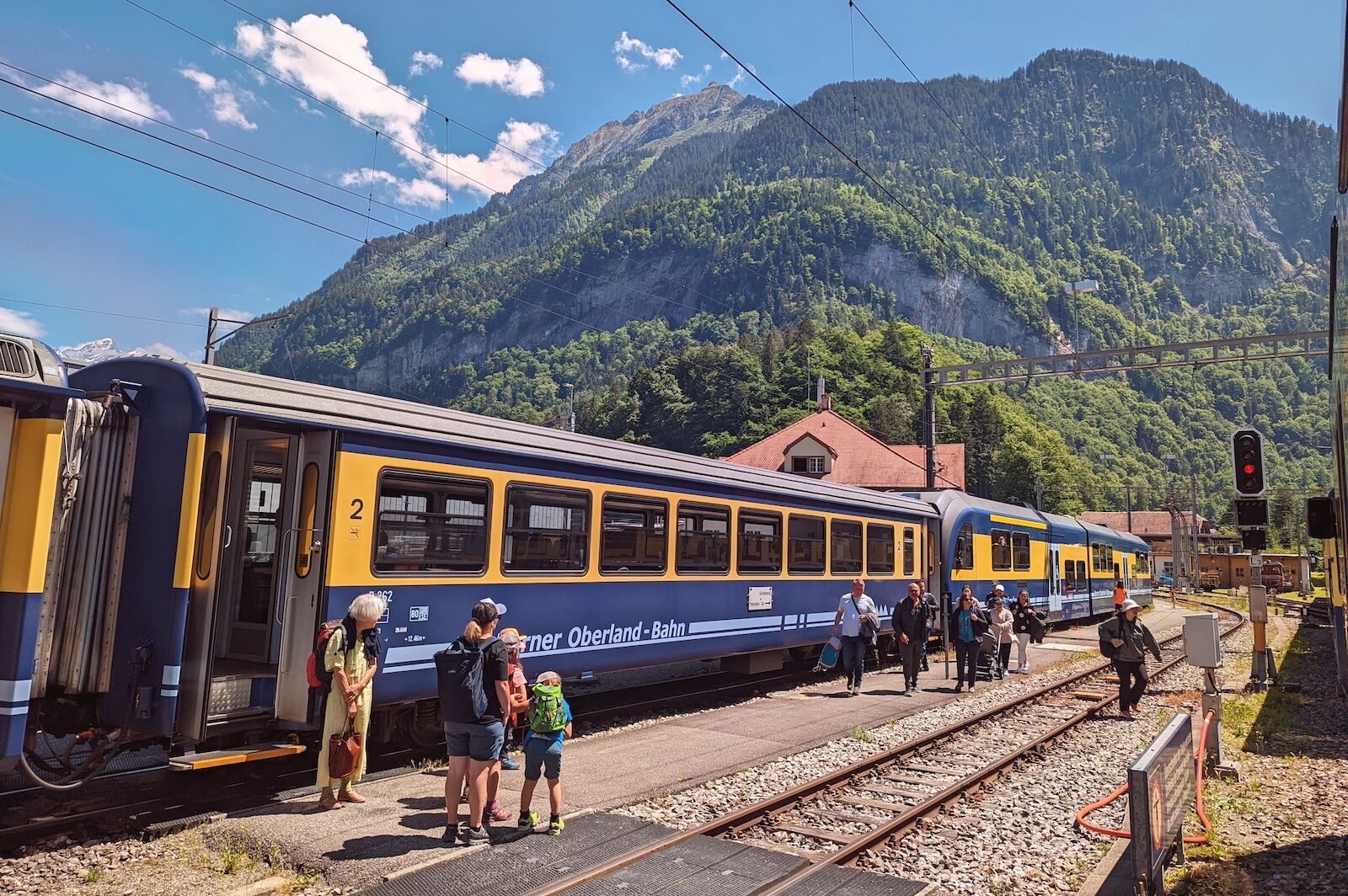
Photo: Ren Design/Shutterstock
If you’re planning to spend more than a couple of days exploring the Jungfrau region, the easiest way to get around is with the Jungfrau Travel Pass.
The Jungfrau Travel Pass gives passholders access to a network of rail systems that connect to the region’s attractions and villages. Passes are valid between three and eight days. Adult tickets range from approximately $220 for a three-day pass to $360 for an eight-day pass. The cost for children ages six to 15 is approximately $35 regardless of the pass duration.
Some of the railways included in the Jungfrau Travel Pass are open year-round while others operate seasonally. Discounted fees for Jungfraujoch excursions are included in the price of the Jungfrau Travel Pass — more on that and the rest of the region’s highlights below.
Highlights of the Jungfrau Travel Pass
Jungfraujoch: The Top of Europe
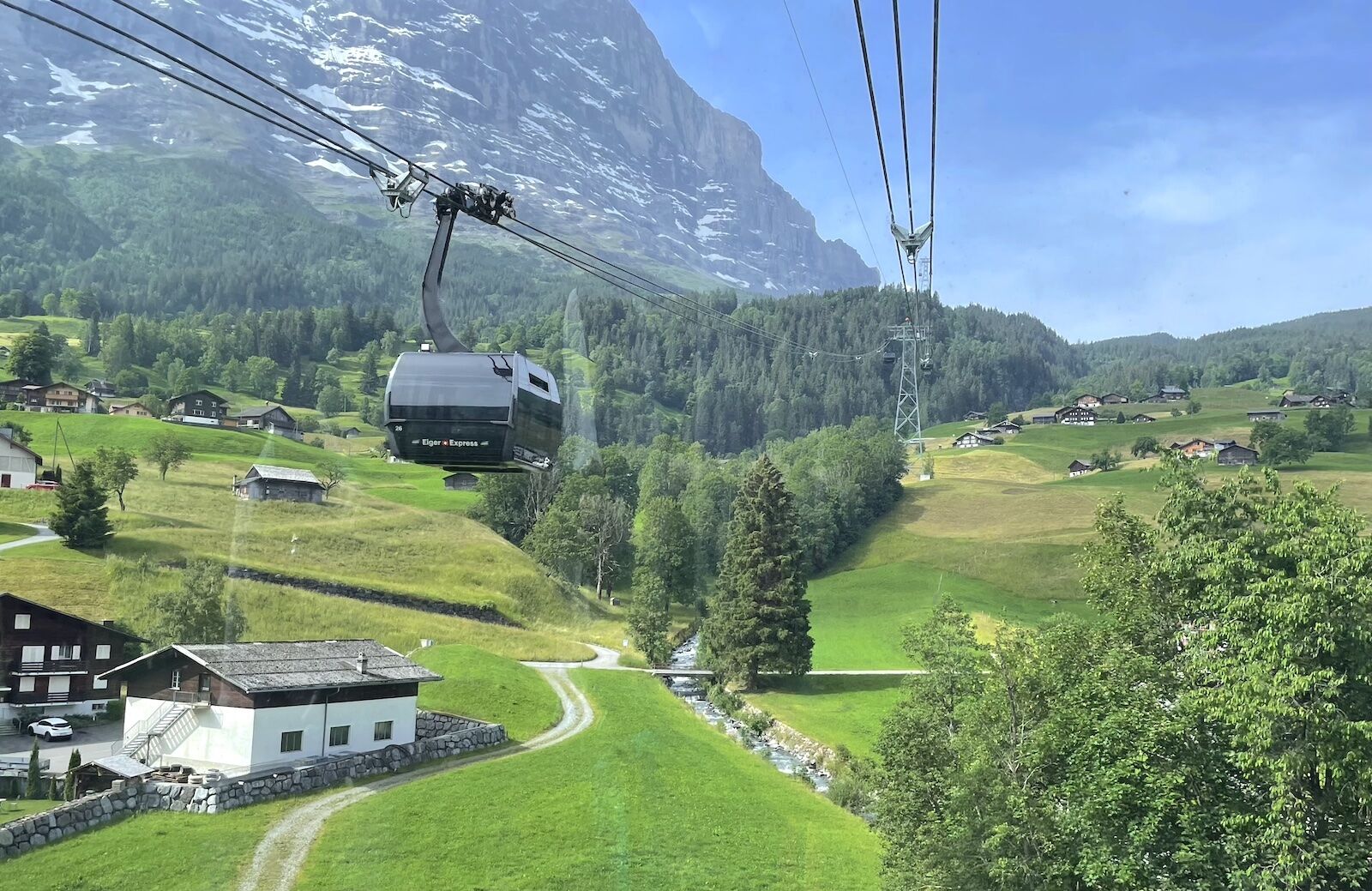
Aboard the Eiger Express en route to the Jungfrau Railway
Photo: Alex Bresler
The journey to Jungfraujoch begins on the Eiger Express gondola at Grindelwald Terminal station. The three-year-old tricable gondola transports riders to Eiger Glacier station in just 15 minutes, an impressive feat considering you gain more than 4,000 feet of elevation as you’re carted past the largest north face in the Alps — that of the Eiger mountain.
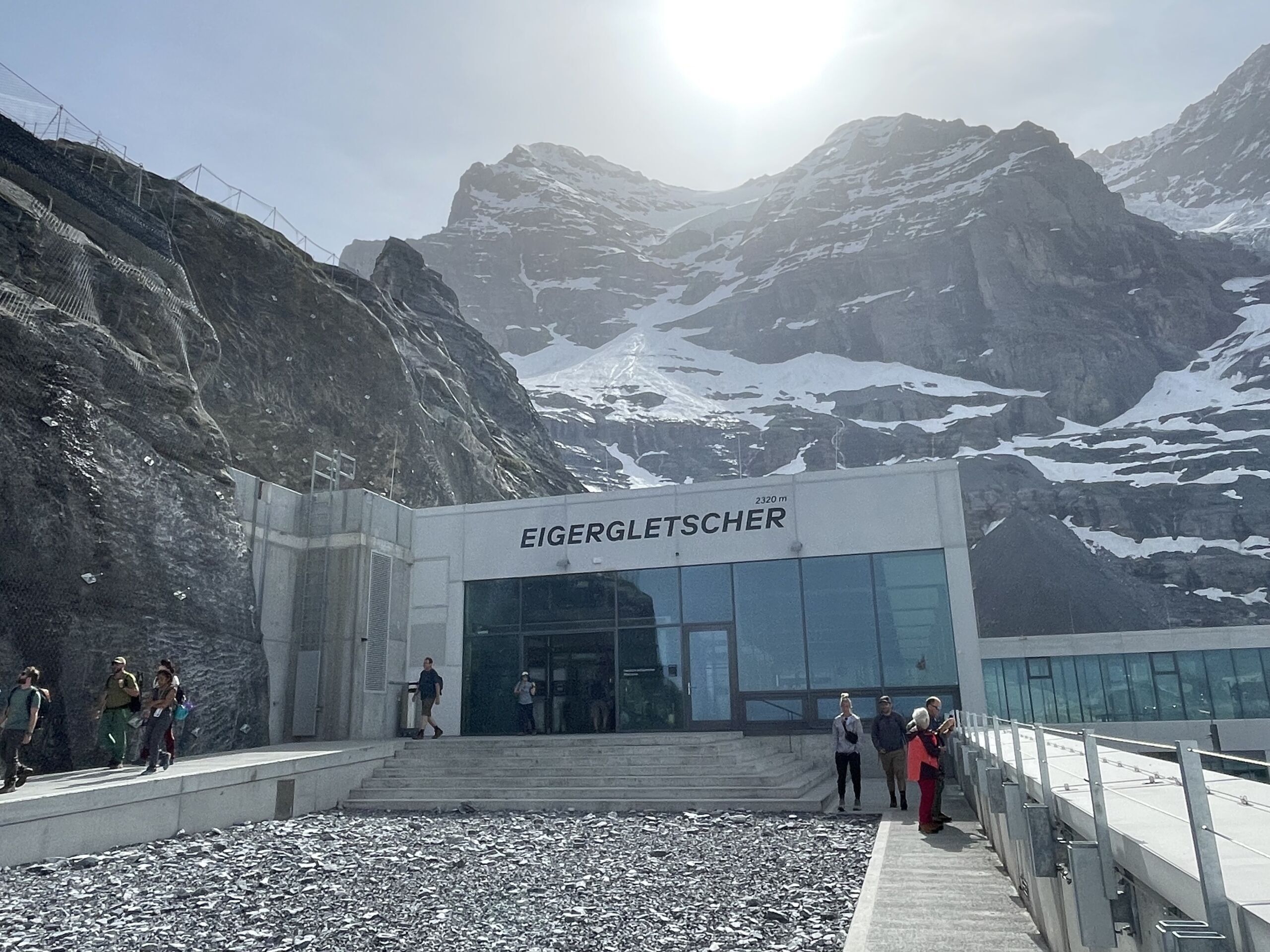
Eiger Glacier station, midway to Jungfraujoch
Photo: Alex Bresler
Eiger Glacier station connects to the Jungfrau Railway, which has been transporting visitors to Jungfraujoch since 1912, as well as trails leading to lower-elevation stations such as Kleine Scheidegg if you prefer to tackle some of the trip on foot. Midway through the 30-minute ride on the Jungfrau Railway, you can hop off at Eismeer station inside of the Eiger to learn about the history of the hydroelectric railway and how its mountain tunnels were carved.
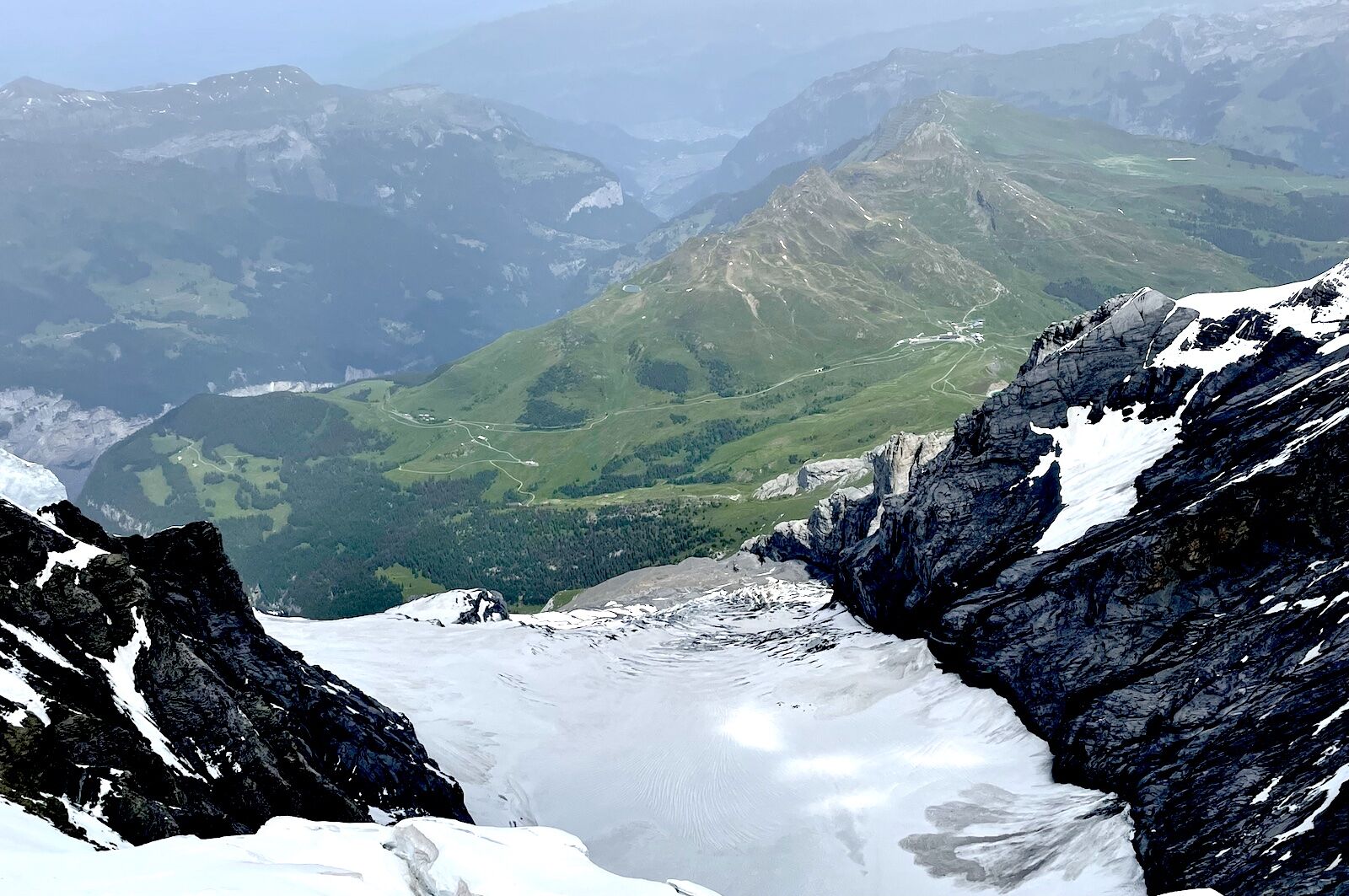
The “half-colorized” view from the Sphinx Observatory platform
Photo: Alex Bresler
Once at Jungfraujoch, you’ll find not a single viewpoint but a station with multiple attractions, including an ice palace, two restaurants, an interactive Lindt chocolate shop experience, and the Sphinx Observatory viewing platform where you can marvel at the 15-mile-long Aletsch Glacier, the longest glacier in the Alps. On clear days, it’s said that you can see all the way to Germany’s Black Forest looking north and France’s Vosges Mountains to the south.
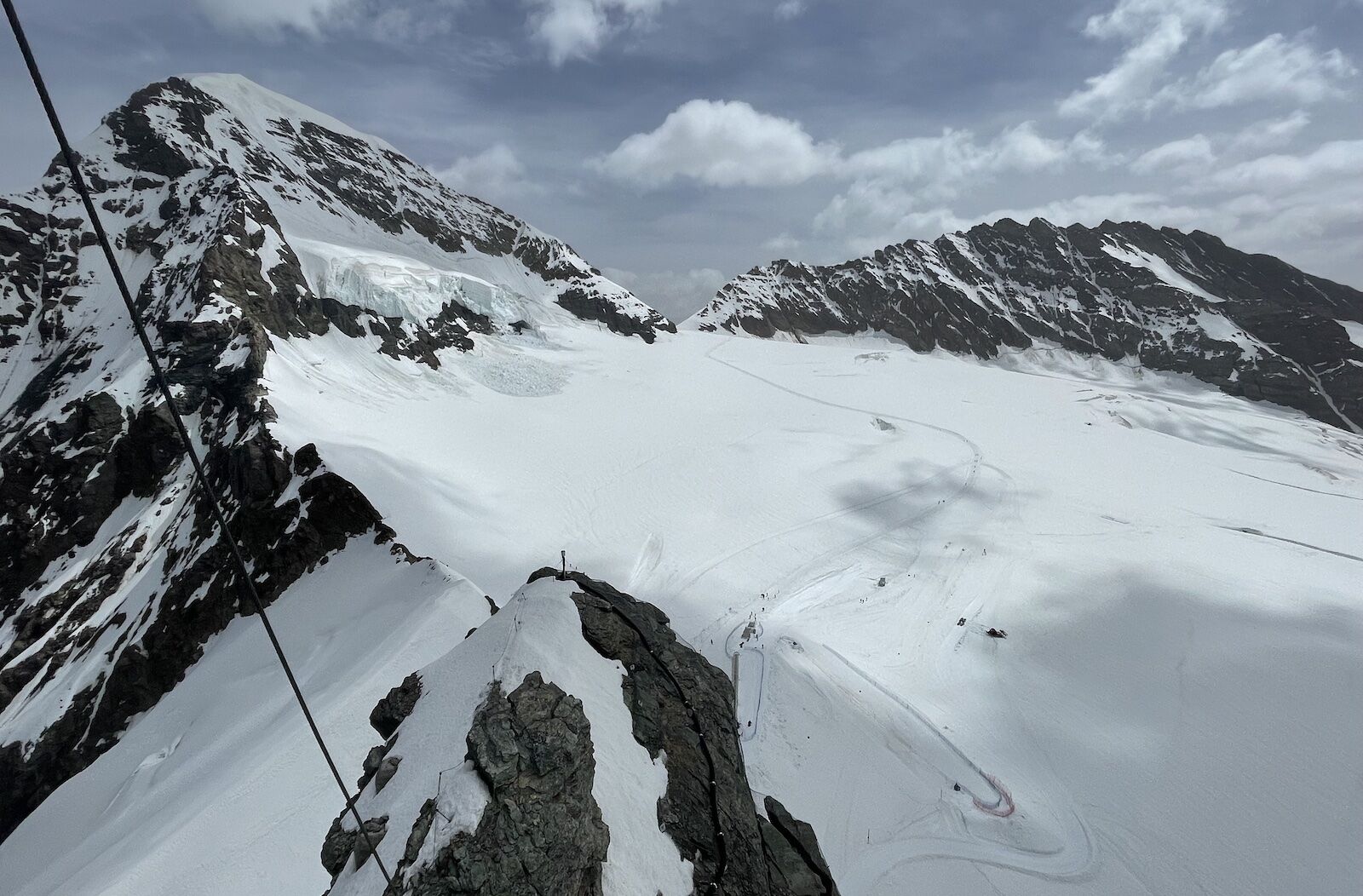
The snowy trail to Mönchsjochhütte
Photo: Alex Bresler
Easier to see is the marching band of hikers below the observation deck navigating a secure piste en route to Mönchsjochhütte, a mountain hut that carries yet another superlative as the highest manned hut in Switzerland. The 45-minute walk is open to all in the summer but only to mountaineers in the winter when the tunnel exit from Jungfraujoch is closed.
Season: Year-round
Tickets: From $92
Grindelwald First: The Top of Adventure
Across the Lütschine Valley from Jungfraujoch, an Alpine adventure park cascades down the slopes of Schwarzhorn mountain from 7,000-foot-high First station. Compared to the Eiger Express, the First Gondola Cable Car inches toward its terminus from downtown Grindelwald, but what awaits at the top is arguably more exciting than Jungfraujoch.
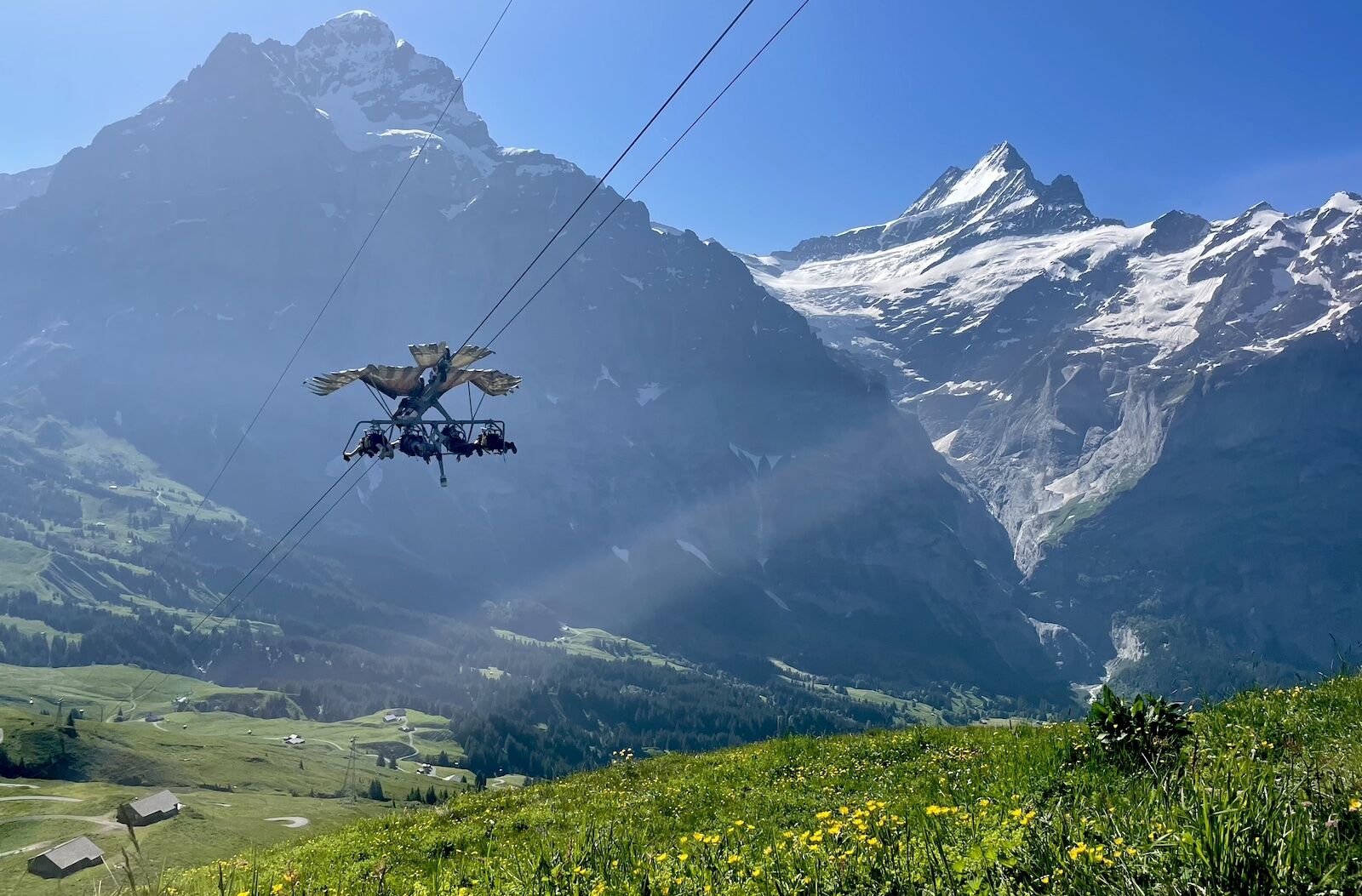
The Superman-style First Glider in action
Photo: Alex Bresler
The cable car makes three stops before arriving at First station, each of which marks the starting point for a different thrill ride. From First, a zip-line-esque Flyer propels riders down a steep cable toward Shreckfield, the second-highest station, at a surprisingly leisurely 50-plus miles per hour. From Shreckfield, a Superman-style flyer called the Glider pulls riders backward toward First before launching them back down a cable at a similar speed. Counterintuitively, the ascent is the most thrilling part of the ride while the latter half of the experience provides an unbeatable bird’s-eye view of the landscape from the eagle-inspired Glider.
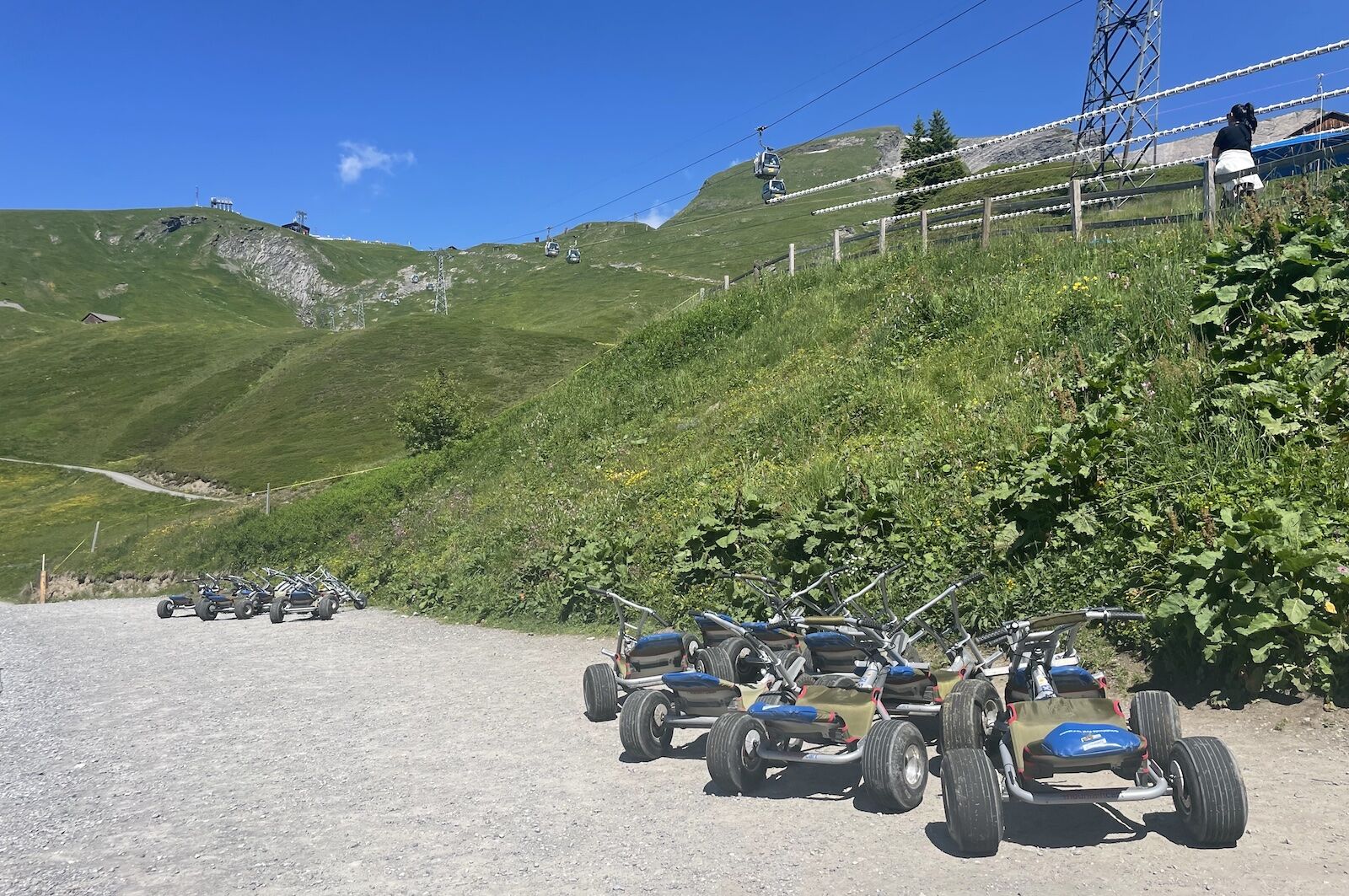
After the Glider, mountain carts await
Photo: Alex Bresler
Back at Shreckfield, it’s time for your first wheeled adventure on a low-to-the-ground, three-wheeled mountain cart. The road is intermittently rocky and steep road, but the steady stream of carters ensures you never pick up too much speed. The mountain cart adventure concludes at Bort station where you can pick up a Trottibike, a hybrid bike-scooter that you ride standing up. The Trottibike path leads from Bort down to Grindelwald where you can return the scooter and take the cable car back up to First for a scenic lunch and stroll along the Cliff Walk that flanks the station, culminating in a viewing platform that extends 150 feet into the open air.
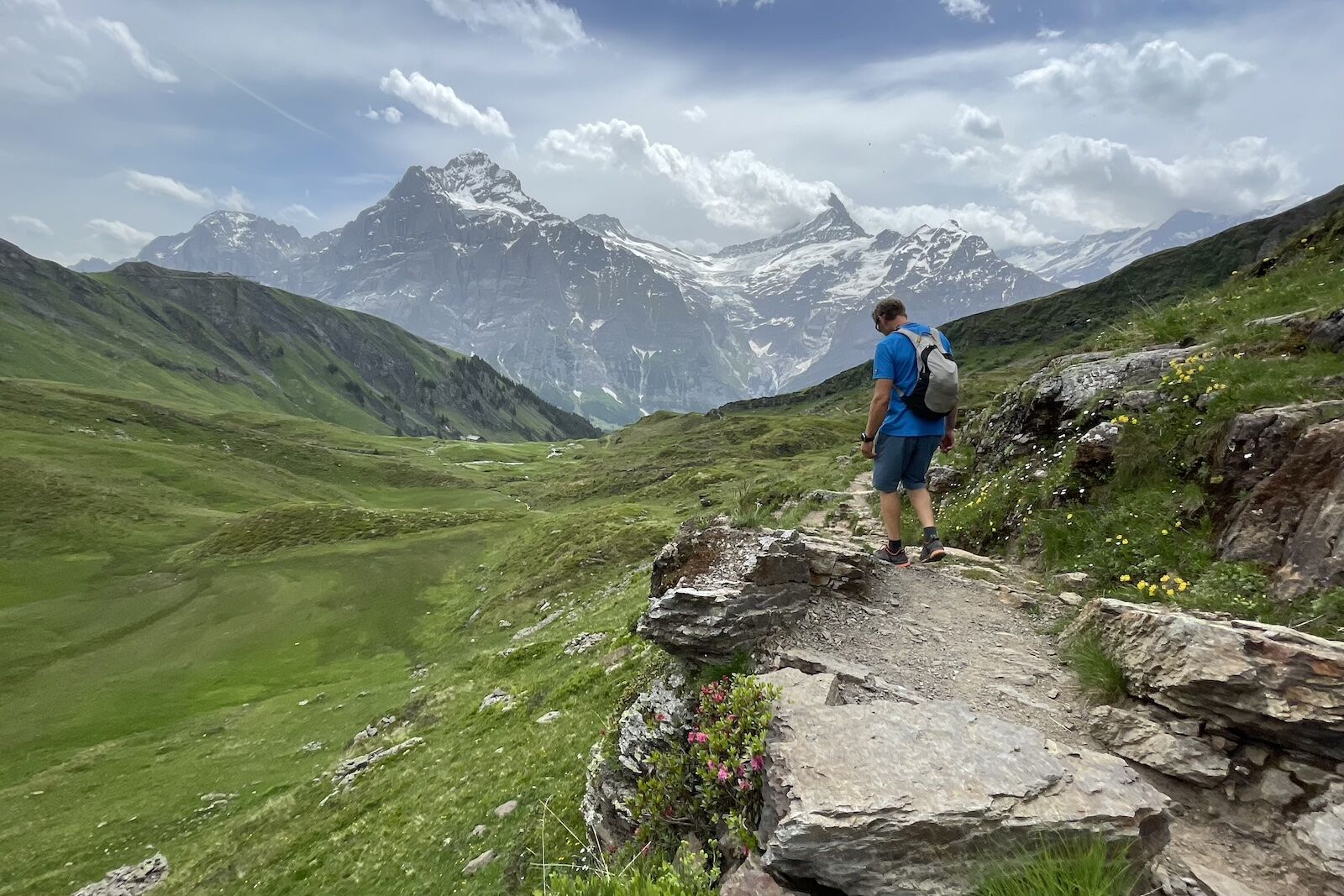
Hiking past Bachalpsee Lake from First station
Photo: Alex Bresler
Those looking for a full day of activities or a standalone hike will also find various trailheads at First station. The hour-long walk from First to Bachalpsee Lake is a nice starting point, with options to continue down the mountain or carry on to the Schynige Platte mountain ridge that’s been dubbed the “Top of Swiss Tradition” on a strenuous 10-mile hike.
Season: Year-round for Flyer and Glider, summer for Mountain Cart and Trottibike
Tickets: From $38 for the cable car, from $58 for the adventure park
Schynige Platte: The Top of Swiss Tradition
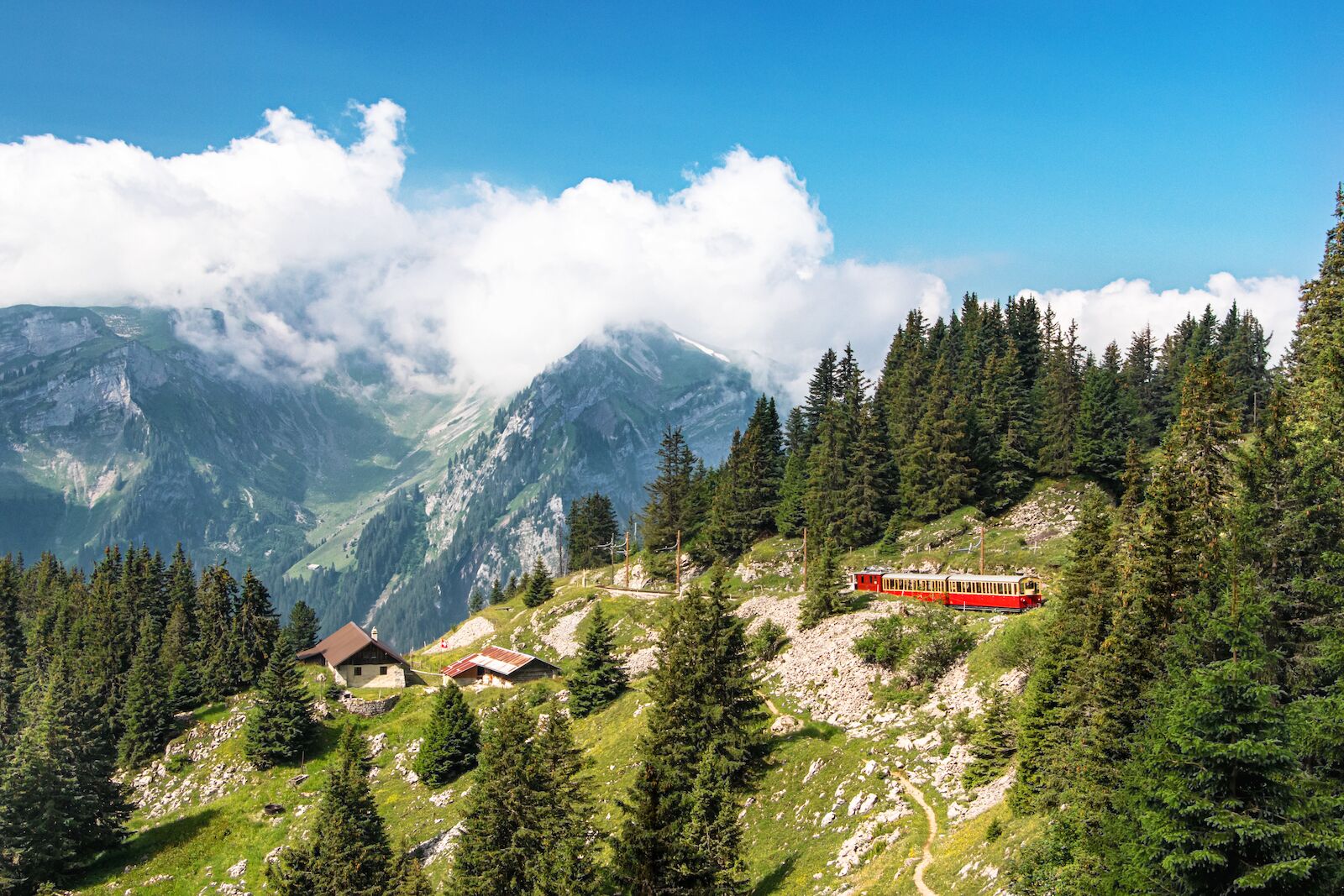
The Schynige Platte Railway chugging along
Photo: Maksym Ketsmur/Shutterstock
Schynige Platte is a mountain ridge perched above Wilderswil village, which is located roughly 10 miles from Grindelwald and two miles from Interlaken. It’s possible to hike there in about six hours from First station, but the heart of the Schynige Platte experience is a 50-minute nostalgia ride on a narrow gauge cogwheel train. The Schynige Platte Railway opened a few years before ground broke on the Jungfray Railway in the late 19th century, and to this day, the wooden-benched trains rely on manual directions by railway managers.

An alphorn concert at Schynige Platte Photo: fritschk/Shutterstock
At Schynige Platte station, riders enter a world of Swiss tradition, starting with daily free alphorn concerts. Musicians donning traditional dress (think lederhosen and dirndls) sound long wooden horns that originated in the Alps as a means of communication between villages between 11 AM and 2 PM near the station, creating the perfect soundtrack for a typical Swiss lunch of rösti (potato hash) or älplermagronen (Alpine macaroni and cheese).
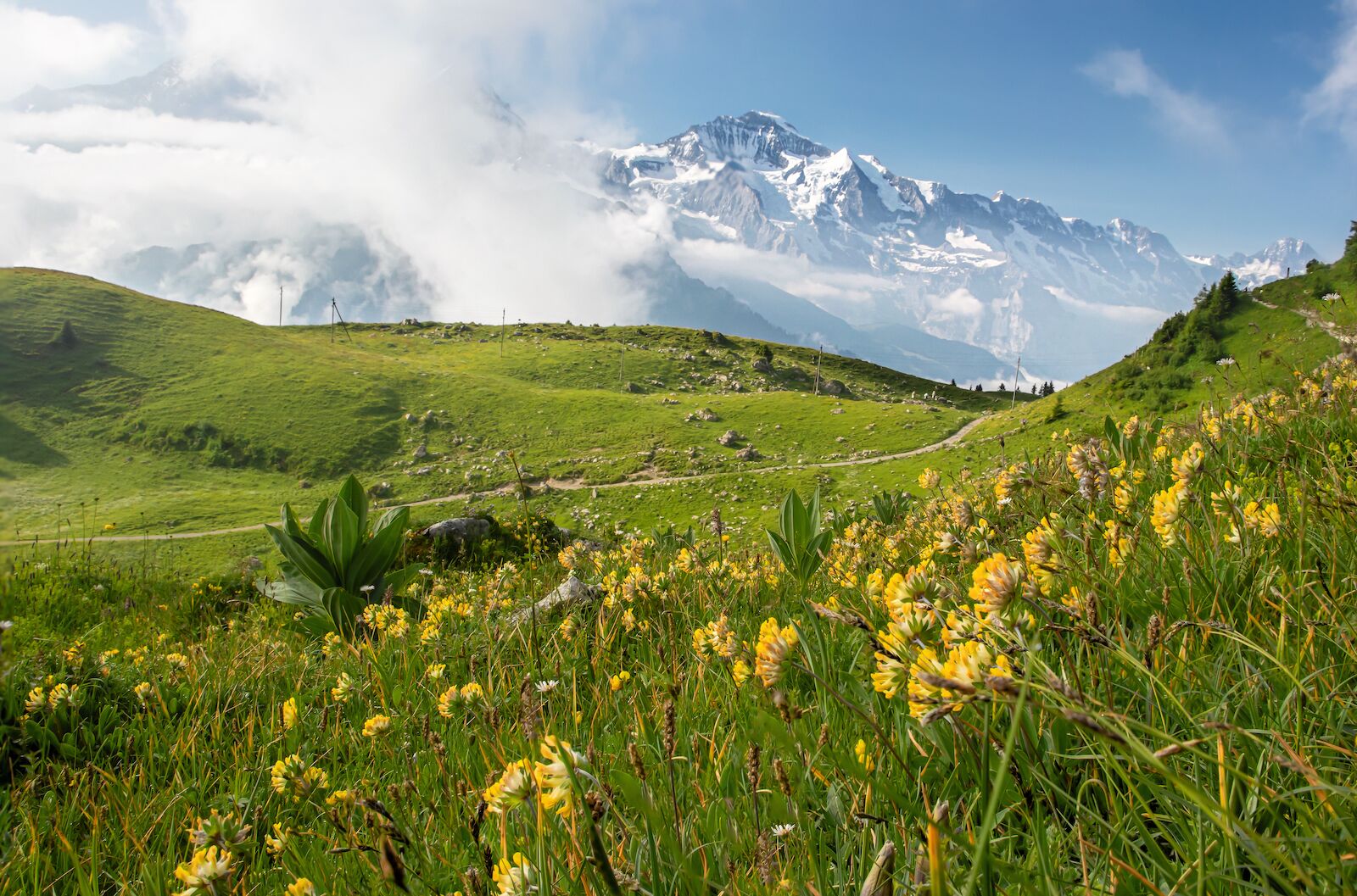
Yellow hawkweed flowers and Eiger mountain at the Schynige Platte botanical garden
Photo: Maksym Ketsmur/Shutterstock
The views from the station are wide and breathtaking, but the prettiest flora is on display in an Alpine garden that showcases some 800 native species. Before you depart Schynige Platte, follow the relatively flat, 30-minute Swiss Flower and Panorama trail to see blooms up close and admiring the vistas from the ridge’s 6,500-foot-high vantage point.
Season: June through October
Tickets: From $35
Harder Kulm: The Top of Interlaken
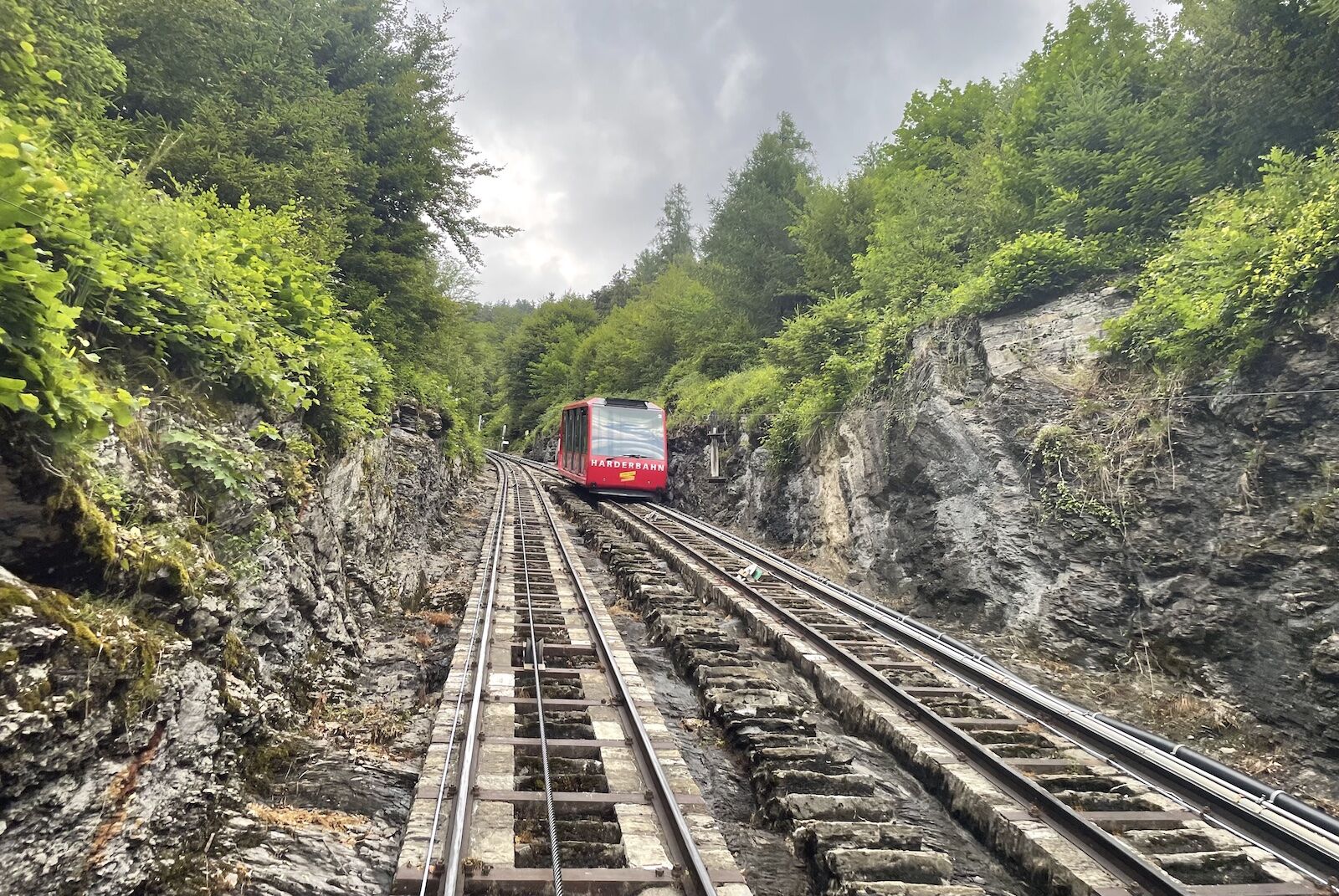
Catching the 100-year-old Harderbahn funicular
Photo: Alex Bresler
Grindelwald First is billed as the “Top of Adventure” in Jungfrau, but the resort town of Interlaken is generally accepted as the “Adventure Capital of Switzerland.” Positioned between the bigggest lake in the Bernese Oberlands, Lake Thun, and fjord-like Lake Brienz, Interlaken is the largest town in the region, with an adventure-sports infrastructure that supports a wider range of adrenaline activities, such as bungee jumping, skydiving, paragliding, and whitewater rafting.
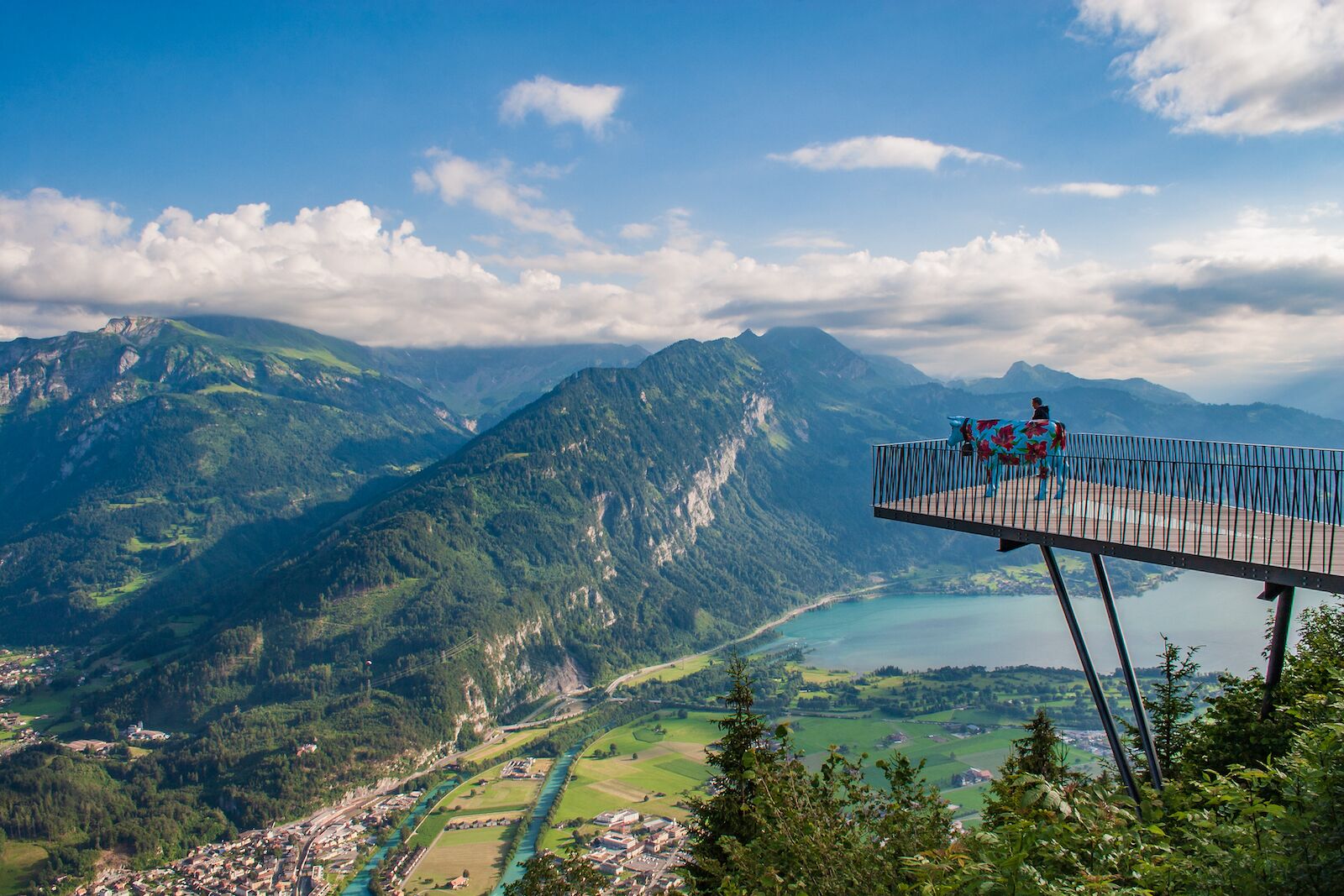
A glimpse of Interlaken and Lake Thun from the viewing platform at Harder Kulm
Photo: Ksenia Molina/Shutterstock
Unless you plan on paragliding, the most expansive view in town lies at the top of the Harderbahn funicular at Harder Kulm, or the “Top of Interlaken.” From the station’s Two Lakes Viewing Platform near the Panorama Restaurant, you can see Jungfrau’s two spectacular lakes and three famous peaks, as well as landmarks such as the Höheweg promenade, Heimwehfluh lookout tower, and 12th-century Schloss Interlaken Castle. (Bonus views of Interlaken and its surrounds await on the hour-long forested Harder Kulm Circular Path.)
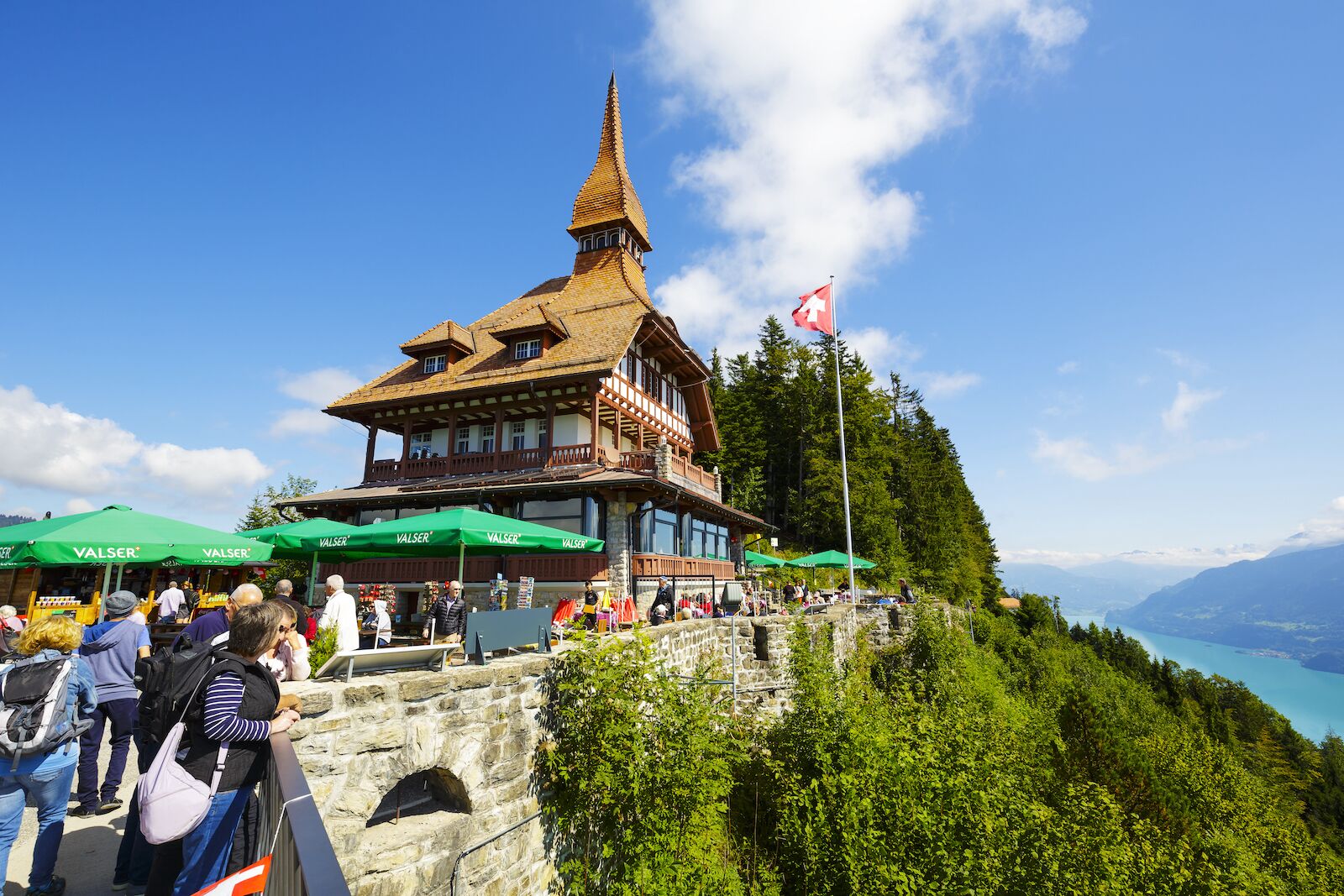
The castle-like Panorama Restaurant at Harder Kulm station
Photo: marekusz/Shutterstock
Charmingly, the restaurant at Harder Kulm also resembles a castle on a hill. It’s a tourist attraction, yes, but also a venue where locals vie to marry every year. Like Schynige Platte, Harder Kulm also stages complimentary Swiss folklore performances from 6:30 to 8:30 PM between June and September — a perfect pairing with sunset views and an evening aperitif.
Season: April through November
Ticket: From $23
Where to stay in Jungfrau, Switzerland
There’s no bad choice when it comes to picking a base in the Jugfrau region thanks to its impeccable rail service and the ease of movement with the Jungfrau Travel Pass. Some accommodations, on the other hand, provide more comfort and convenience than others. These are some of the best picks in the region, from idyllic Grindelwald to iconic Interlaken and après-ski-favorite Mürren, the highest-elevation ski resort in the Bernese Oberlands.
We hope you love these hotels in the Jungfrau region! Just so you know, Matador may collect a small commission from the links on this page if you decide to book a stay. Listed prices are accurate as of the time of publication.
Bergwelt Grindelwald
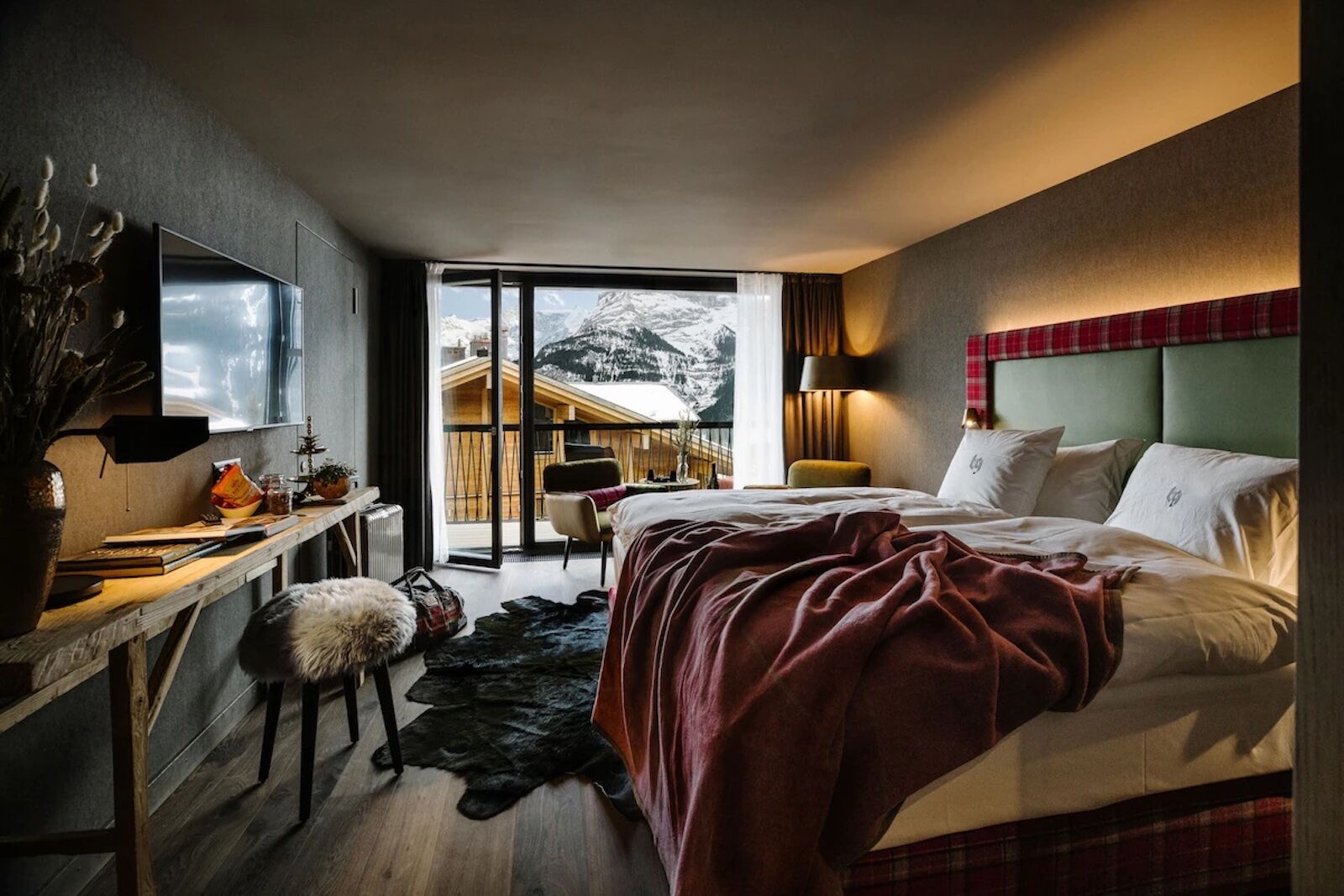
Photo: Expedia
Opened in 2021, the 90-room Bergwelt Grindelwald is one newer hotels in the Jungfrau region, and it shows in its balance between modern luxury and Alpine charm. The downtown location is hard to beat, just a few minutes on foot from the First Gondola Cable Car. To make the most of your stay, take advantage of the Fire & Ice Spa, but be sure to book sauna sessions in advance.
Where: Bergwelt 4, 3818 Grindelwald, Switzerland
Price per night: From $398
Book Now
Victoria-Jungfrau Grand Hotel & Spa
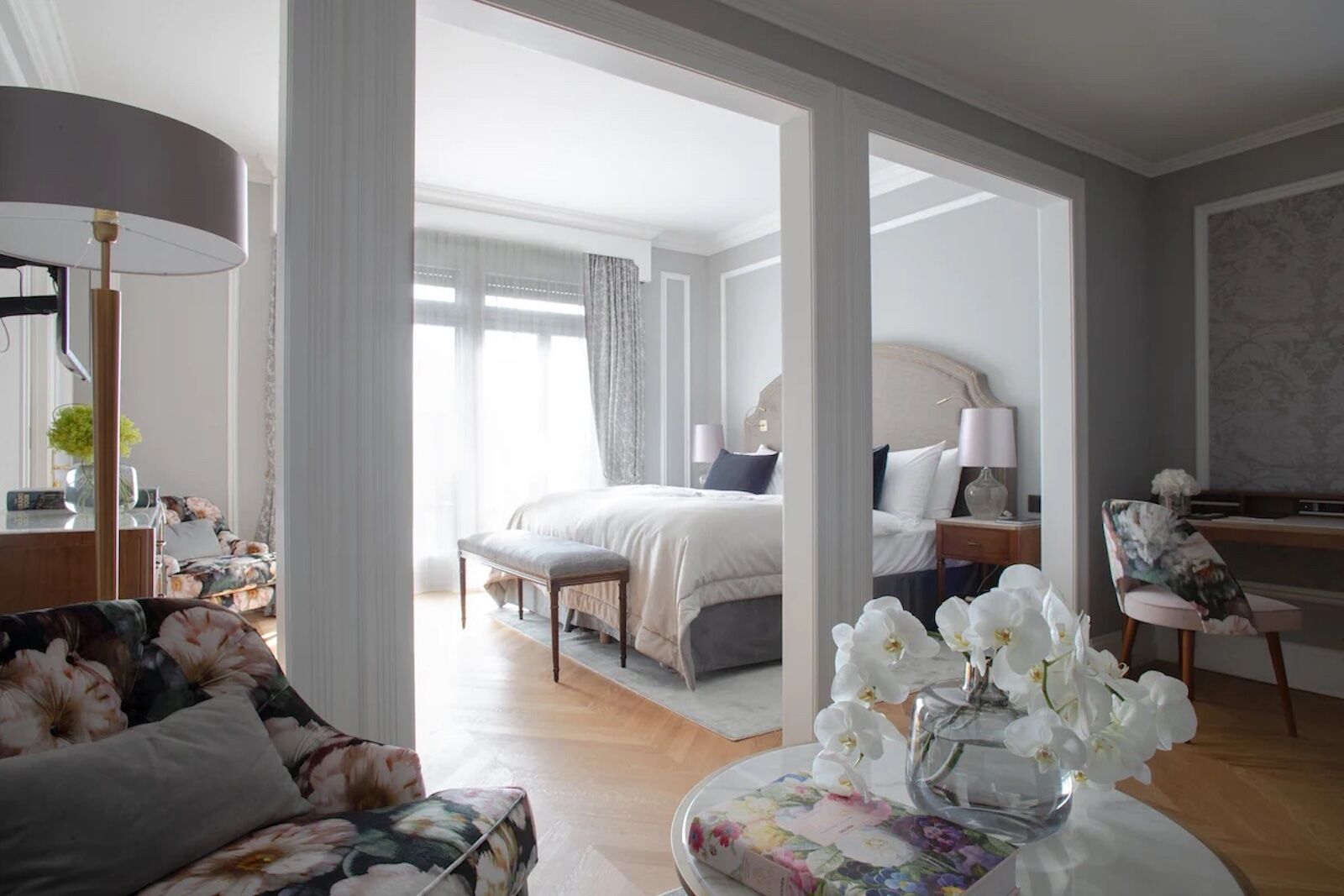
Photo: Expedia
To borrow a phrase from the Jungfrau region, the Victoria-Jungfrau Grand Hotel & Spa is the “top” of luxury in Interlaken. The property looks as regal as the Schloss Interlaken Castle, which is less than 10 minutes away on foot along the Höheweg promenade. The hotel’s five-star service also extends to experiences ranging from waterfall and cave visits to paddelboarding and wine tasting, not to mention excursions to all of the “top” attractions in the region.
Where: Victoria Jungfrau Grand Hotel, Höheweg 41, 3800 Interlaken, Switzerland
Price per night: From $640
Book Now
Hotel Eiger Mürren

Photo: Expedia
If you’re looking for a high-elevation stay in the Jungfrau region, particularly during the snowy season, Hotel Eiger Mürren is an excellent choice. The hotel has the look and feel of a quintessential Alpine chalet — including access to some of the best slopes around. Even if you’re not a skier, the mountains views from balconied rooms are unparalleled.
Where: Ägerten 1079C, 3825 Mürren, Switzerland
Price per night: From $230
Book Now